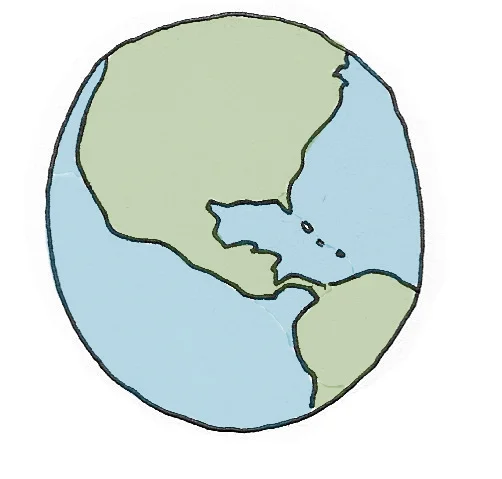Climate Change Simplified for Kids
Task: To write and illustrate a children’s book that makes climate change more accessible for a younger demographic.
Scientific Findings is a climate change series that grows with you.
Book #1 Gracie the Geographer : Targeting kids ages 4-7, we’ll just touch on very simple yet important vocabulary like the “Earth,” “temperature,” and “change.”
Book #2 Ellie the Entomologist : Targeting kids ages 8-11, we’ll begin to discuss the United States’ different landscapes, the ways they’re changing, and how to help.
Book #3 Ben the Biologist : Targeting kids ages 12-16, we’ll build on the ideas of how to help, but focus more on the actual scientific reasoning, deeper climate theory, and future planning ideology.
Strategy
Audience: children ages 8-11 (3rd-6th grade), and their parents.
What do children currently think? Children know of climate change as a scientific and new-related issue, but aren’t sure what it really is, what the related terms mean, and how to begin fixing it. They have the skills to understand and feel negative emotions towards it. With that in mind, our book series can give them the tools to begin caring and helping.
What do parents currently think? Parents are interested in experiences that are fun but grounded in education. They might see climate change as too intimidating and scary. However, parents are always looking for subtle ways to send messages to children they find important, without having to lecture at them. This is a book series that does exactly that.
Single Most Compelling Idea
Complex issues become fun and manageable through story.
These books provides both parents and children to not just share a reading and learning experience together, but actually understand and help to solve a larger issue.
Copy of Scientific Findings: Ellie the Entomologist
Illustrations of Scientific Findings: Ellie the Entomologist
The Glossary of Terms of Scientific Findings: Ellie the Entomologist
Research
Communicating Climate Change: Why Frames Matter for Public Engagement
Nisbet, 2009
The article is based around the idea that “the necessary level of public engagement with the issue [climate change] still appears to be missing.”
In order to get all varying groups of society engaged, we need to frame the issue in certain ways, through a series of certain channels.
Frames are “interpretive storylines that set a specific train of thought in motion, communicating why an issue might be a problem, who or what might be responsible for it, and what should be done about it.” There are about eight ways to frame information.
Advertising’s Responsibility to the Future
Morrison, 2015
The article focuses on agencies’ responsibility to be aware of climate change and work to help the issue, as they are one of the biggest causes for consumption and excessive purchase of harmful products.
Proving through extensive and thorough research, we know that climate change is real and needing to be addressed, and agencies need to do better.
Brands, agencies, and campaigns need to actually do things to enact and promote change, not just sugar their products or ideas with fancy terms to make them more appealing.
Climate Change Diffusion: While the world tips, business schools lag
Patenaude, 2010
Diffusion of innovations: how new ideas are spread and adopted over time and throughout various cultures.
This can be a challenge due to things like simplicity of, communication of, and receptiveness of new information.
Business schools are lacking in both learning of and a teaching of models aware of and aiding climate change and the future of the planet.
Team:
Olivia Bowman, copy and book content
Mercedes Gibson, design and illustration
Abby Mizera, strategy and deck.












